SUMMARY
This is AI generated summarization, which may have errors. For context, always refer to the full article.
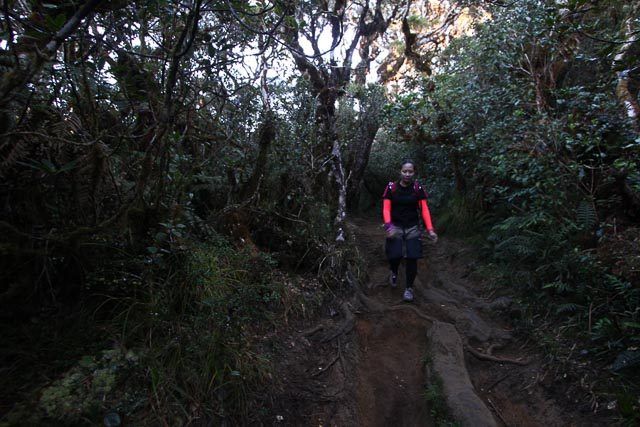
Every marathoner knows what it is to “hit the wall” – that point around two to 3 hours into the 42-kilometer run when every sinew in one’s body seems to scream for you to stop. Everything hurts. It’s also called the “bonk” for good reason.
It’s not all in your head. Scientifically, it’s when the body has used up all the glycogen stored in one’s liver and muscles for energy. For other runners, what stops them dead in their tracks is when their calf muscles and quadriceps seize excruciatingly with cramps due to a lack of electrolytes and hydration. For others, it can be the debilitating pain of bloody blisters ballooning on one’s toes due to shoe insole friction.
For us competitors at the first ever Cordillera Mountain Marathon (CMM) held last March by the environmental non-government organization Cordillera Conservation Trust (CCT), what stopped nearly every one of us in our tracks was the breathtaking sunrise at the summit of Mount Pulag – the highest mountain in Luzon and the third highest in the Philippines, now the home to the highest marathon in the nation, CMM.
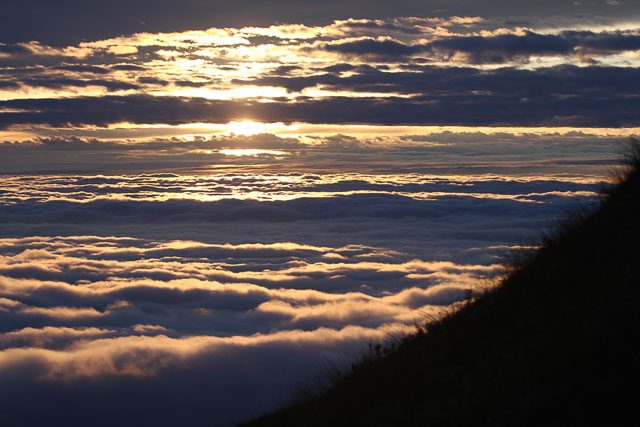
Sightseeing
We couldn’t help but stare at the ocean of clouds, stretching to the horizon, lit lavender and saffron by daybreak, that turned the mountain summit we stood upon into an island in the sky. There were also mobile phone camera flashes, and the place was crowded with the silhouettes of racers who stopped to take selfies and group shots. The race organizers had timed the race so that most runners would get to the peak by sunrise.
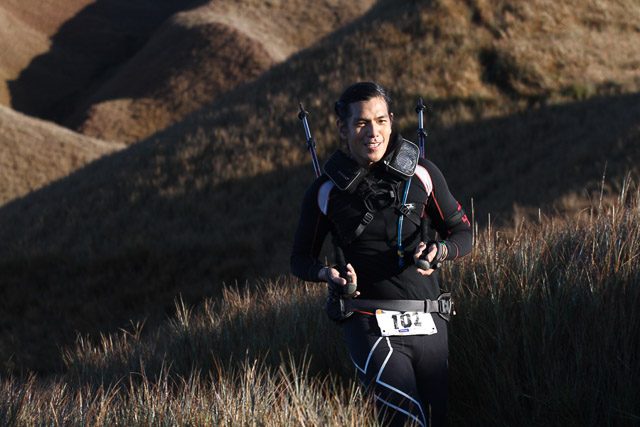
The summit wasn’t the only point in the race that took our breath away. The entire course presented jaw dropping vista after vista. We couldn’t help but marvel at the undulating peaks of the gilded grasslands glinting in the sun and the mountain trail that snakes through them, or the dewy moss-festooned forest and its tangle of gnarly branches and roots just below them.
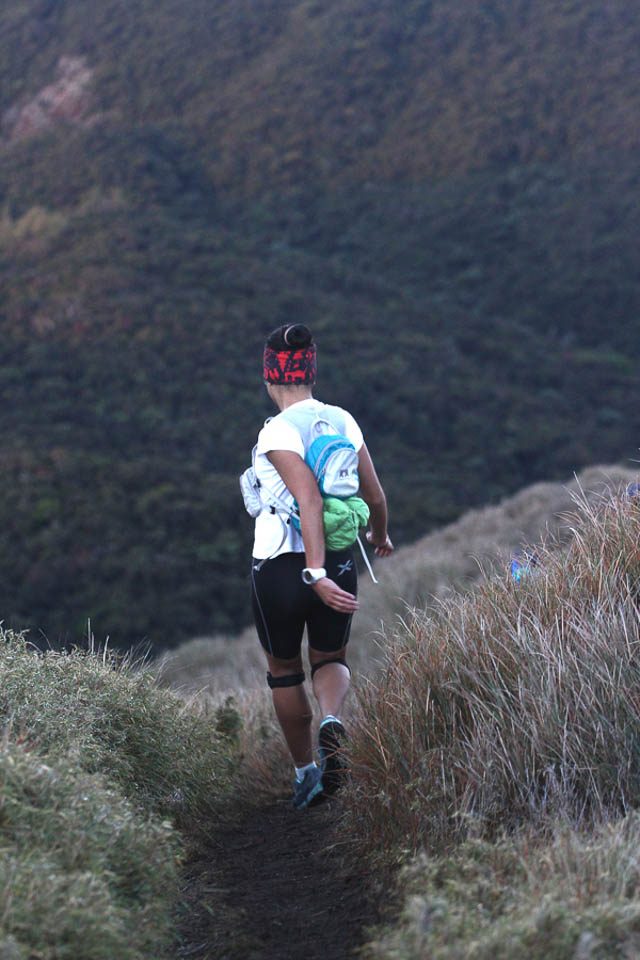
What gave pause to many among us as well was the daunting view that awaited past the mossy forest – the steep slippery downhill path of loose crumbly earth that led to a rickety steel monkey bridge to the riverside town of Danggo, Nueva Vizcaya Province, and the knowledge that after that village, a long, nearly uninterrupted climb awaited every marathoner on his way back to the finish line at mountainside village of Babadak, Bontoc Province.
An equally irresistible reason to take a break was the hospitality of the locals, be they the townsfolk of Danggo, who offered their own indigenous version of “suman” (red mountain rice cake sprinkled with sweet peanut bits and wrapped in banana leaf) paired with coffee freshly brewed from mountain grown beans, the battle-ready members of the Philippine National Police assigned to ensure the participants’ safety, who selflessly shared their own meals to hungry and tired runners on their last legs, or the school children at the village of Balete, Ifugao Province, who offered all of the marathoners running past the warmest of smiles.
And yet nearly every one of us kept on running, precisely because of all these awe inspiring sights and heartwarming people. Of the 195 marathoners from across the globe – some coming from as far as Great Britain, Denmark, United States, Australia, Malaysia, and Singapore – who showed up at the starting line before dawn at 4am in 9-degree Celsius weather at the ranger station of Babadak, Benguet Province, some 2,400 meters above sea level, all but 3 made it to the finish line within the14-hour cutoff time mandated by the organizers for safety reasons. Many, including myself, crossed the finish line beaming and brimming with gratitude for both the organizers and the indigenous villagers.
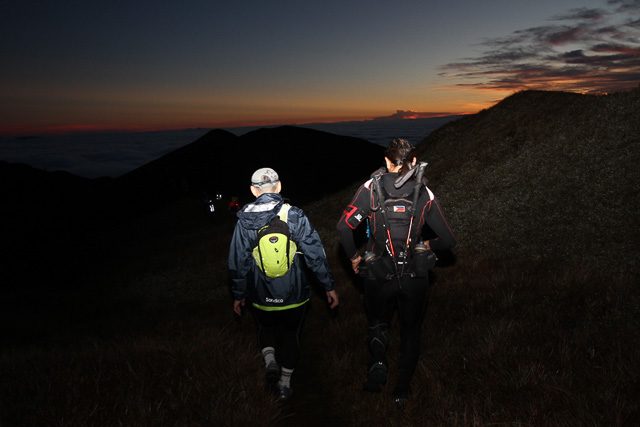
Not that this was an easy race.
No ordinary marathon
The Cordillera Mountain Marathon is, arguably, the hardest 42 kilometers you will ever run in the country. It courses through no less than three provinces: Benguet, Nueva Vizcaya, and Ifugao. The race not only spanned a horizontal distance of 42 kilometers – the very definition of a marathon (the distance between the city of Athens and ancient battlefield of Marathon in Greece) – but also entailed ascending 3123 meters and descending 3065 meters of vertical distance.
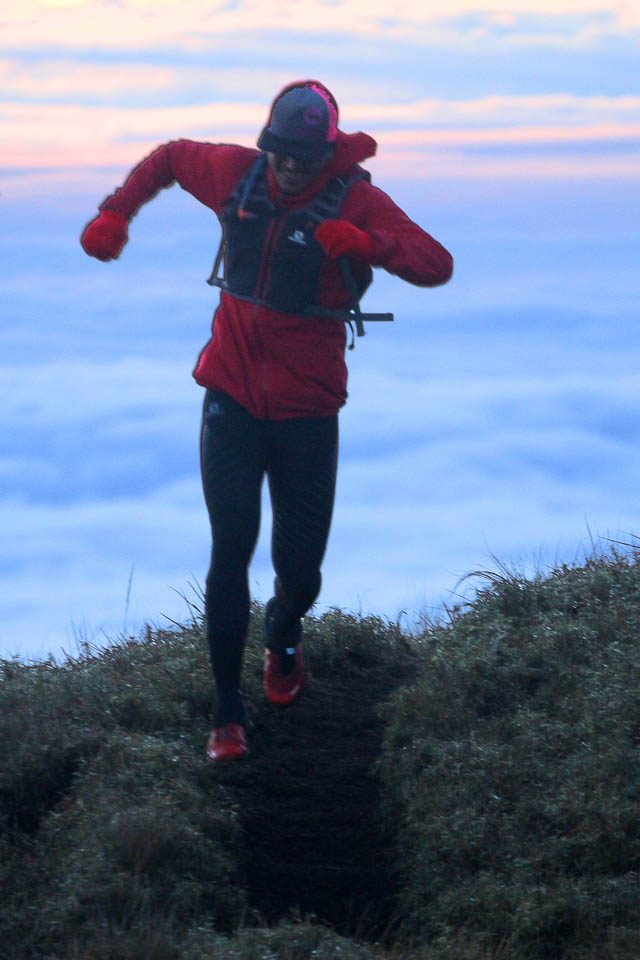
As the Cordillera Conservation Trust notes, 60% of the course is at an altitude of 2000 meters above sea level. At its highest point at the summit of Mount Pulag, the race course was 2942.7 meters above sea level and and its lowest point at the river valley of Danggo was 1141.1 meters above seal level. Even those who ran the 11-kilometer race course that the the event also offered nonetheless had to negotiate many of same challenges the marathoners did.
Unlike conventional marathons where competitors run paved roads unencumbered, mountain races necessitate technical skill negotiating wilderness trails, constant vigilance in spotting trail signs to avoid getting lost, and a degree of self-sufficiency made possible by rugged yet lightweight gear specifically for trail running.
CCT required racers to bring a minimum of 1 liter of water, 1,500 calories of food, a head lamp, a bonnet, rain jacket, a long sleeved shirt, an emergency thermal blanket, pocket money, and a mobile phone that had the number of the race director, JP Alipio, for emergency purposes. This all meant we ran up the steep slopes with backpacks and hydration vests in both the utter darkness and freezing cold of the predawn morning as well as sweltering heat of the noonday sun. Besides trail running shoes, trekking poles were a great help in negotiating the steepest parts of the run.
Thankfully, the weather was pleasant. Nonetheless, our shoulders as well as our legs ached from all the gear we carried. Hunger, fatigue, sprained ankles, cramped calves, and blistered toes took their toll on some of even the strongest of runners.
And yet we were all smiles.
In good company
The race not only attracted the very best of elite trail runners in the Philippines – the likes of Marcelo Son-Oy, Thumbie Remigio, Roland Wangwang, Andrew Chinalpan, Koi Grey, to name but a few. It also brought together members and alumni of various groups such as Philippine Skyrunning Association, the University of the Philippines Mountaineers, the Loyola Mountaineers, and the Meralco Runners, among many others.
The podium finishers for the 2015 Cordillera Mountain Marathon were Sandi Menchi Abanan for first place, Marie Josephine Liao for second place, and Joanne Plumbley for third place for women; and Marcelo Son-Oy for first place, Mayo Sinpoda for second place, and Aldean Philip Lim for third place for men.
Kian Vicera, member of the Philippine Skyrunning Association and veteran of the 160-kilometer Ultra-Trail du Mont-Blanc, arguably the toughest and most prestigious mountain race in the world that weaves through the Alps, noted, “The who’s-who of the Philippine trail running community were in attendance.” Even more notable was how, in the trail running community, there has never been any divide between elite athletes and enthusiasts.
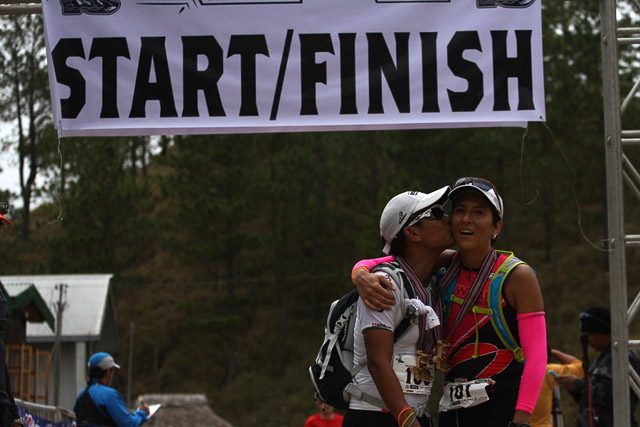
At the starting and finishing point of the race in the village of Babadak, a spirit of camaraderie was fostered not only between competitors but also with the locals as well, who not only cooked food for the event but also provided home-stays for the participants.
Sleeping overnight in farmer’s homes within sight of their seemingly endless fields of carrots and other vegetable crops and within earshot of roosters, hens, pigs, and other farm animals. and bathing in cold mountain water at their outhouses was part of the experience. As cold as the night was at the mountainside village, the hospitality of its people was truly heartwarming.
It was all part of the plan.
Start of something good
Running the Cordillera Mountain Marathon not only felt good for the accomplishment it represents, the panoramas it revealed, and the camaraderie it fostered; the Cordillera Mountain Marathon did its part in its goal to do good for all.
JP Alipio, Executive Director of Cordillera Conservation Trust, explains, “Essentially, the race is a big development project. Directly from us, we were able to employ about a 110 people. But then we also had the caterers, around 200 people.We put a lot of trust with the locals. We only had 20 marshals that came from our group and everyone else is a local. We had 100 marshals throughout the whole course. We were quite happy with that. They had never done that before. We have a partnership now with the University of Baguio and they will be giving training to all the home-stays, including Danggo and Balete. We plan to do this annually, hopefully.”
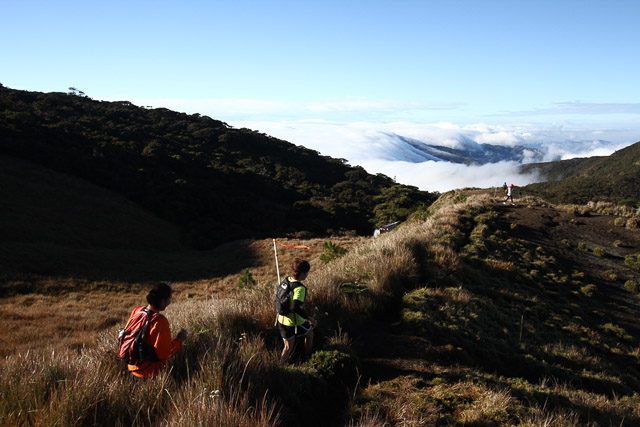
Alipio reveals how the idea for a marathon sprouted: “We’ve always wanted to do something with Mount Pulag. With CCT, we have a hundred seedling nurseries. Most of that, about 70%, are around the slopes of Mount Pulag. We wanted to do something at Mount Pulag that will benefit the locals economically while also raising funds for our work.
“We’ve been going there for years and we saw how, aside from Babadak, no else seems to be benefiting much from the Pulag [eco-tourism] economy. Last year I did a trail run around and it was an exact 42 kilometers and we passed through all these villages – Danggo, Balete – that weren’t benefiting from Pulag. So I said, ‘let’s do this.’ Since September last year we’ve been working on it with the communities. ”
He explains, “The people who are a bit more adventurous and have seen the village of Balete, they’ll be back, whether to run or to trek, and it creates an economy for those areas. Now, if you go through Danggo or Balete, you can get guides from that areas. You can home-stay and have them cook for you. The race itself is just the beginning, but it’s the driver that gets people to visit these areas.”
The first Cordillera Mountain Marathon, as awesome as it was, is but the first of many marathons by Cordillera Conservation Trust to uplift the livelihoods of the locals of Mount Pulag by fostering ecotourism. It’s a heartwarming thought that gives us pause, and keeps us going and coming back for more. – Rappler.com
Writer, graphic designer, and business-owner Rome Jorge is passionate about the arts. Formerly the editor-in-chief of asianTraveler Magazine, Lifestyle editor of The Manila Times, and cover story writer for MEGA and Lifestyle Asia Magazines, Rome Jorge has also covered terror attacks, military mutinies, mass demonstrations, as well as Reproductive Health, gender equality, climate change, HIV/AIDS and other important issues. He is also the proprietor of Strawberry Jams Music Studio.
Add a comment
How does this make you feel?
There are no comments yet. Add your comment to start the conversation.